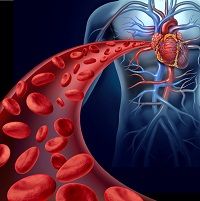Article
Pathology Between Gout and Cardiovascular Events Remains a Mystery
Author(s):
The presence of urate crystal precipitation does not necessarily indicate a greater risk of cardiovascular complications for patients with increased levels of monosodium urate, which is the defining characteristic of gout.

A new study in Arthritis Research & Therapy suggests that the presence of urate crystal precipitation does not necessarily indicate a greater risk of cardiovascular complications for patients with increased levels of monosodium urate (MSU), which is the defining characteristic of gout. The study conflicts earlier research that had pointed to a connection between elevated hyperuricemia and negative cardiovascular outcomes, including greater risk of death.
There is growing evidence that both hyperuricemia and gout—the primary cause of which is hyperuricemia—increase the risk of cardiovascular morbidity and mortality, but the exact nature of the connection has not been well-established. While there is increasing evidence that both hyperuricemia and gout are associated with cardiovascular disease, no previous studies have attempted to address whether MSU precipitation confers a particular risk of cardiovascular disease above what is already inherent in having hyperuricemia.
The current study identified individuals with hyperuricaemia who had joint fluid examinations for urate crystals. Individuals with intra-articular urate crystals were matched by propensity score to individuals without crystals and compared with respect to a composite cardiovascular endpoint. Included in the propensity score model were potential confounders retrieved from four different health care registries. After propensity score matching, the researchers had 317 patients with urate crystals matched 1:1 to patients without urate crystals. They found no difference between the two groups with respect to cardiovascular outcomes (hazard ratios = 0.86; 95 % confidence interval (CI) 0.52 - 1.43) or death (hazard ratio 0.74; CI 0.45 - 1.21).
“We have shown that, among hyperuricemic individuals, MSU crystal precipitation does not influence the risk of cardiovascular events when other important prognostic factors such as urate levels are adjusted for,” the researchers observed. “In contrast to our findings, most studies have reported increased cardiovascular risk among gout patients. These studies, however, do not rely on gout being diagnosed according to international guidelines, but are instead based on either self-reported gout or serial measurement of elevated urate or a combination of different measures.”
Among the strengths of the study was full access to all blood samples for the Danish patients included and the fact that results were based solely on individuals with joint fluid or tophi examinations for MSU crystals. Limitations include the small sample size and the lack of some confounding data, such as smoking status, which is a well-established risk factor for cardiovascular events.
For now, the pathology between the increased risk of cardiovascular diseases among gout patients remains a mystery.




